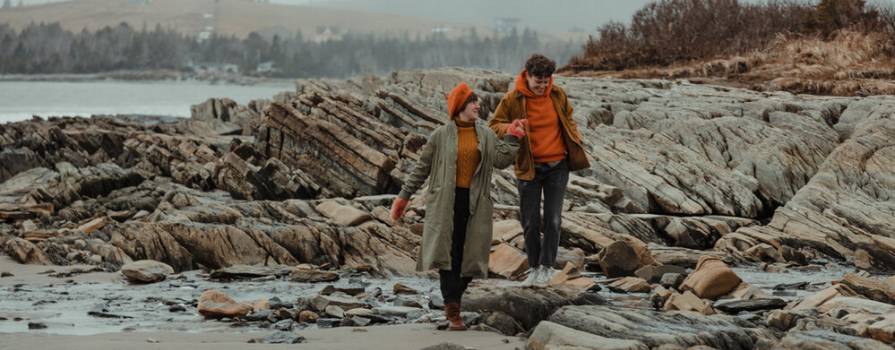Scaling-up production with renewable energy technologies

Self-proclaimed “the Salty Dykes” making waves with salt
NSCC business student, Kim, and her partner Onya took a chance during the pandemic and moved from LA to LaHave N.S. The pair started an artisan culinary salt company called OK Sea Salt that has quickly grown in popularity. In only a few short years, their product has garnered international attention. Recently, they were featured in The New Yorker food critic Hannah Goldfield's year-end list, "The Best Things I Ate in 2022."
Commitment to sustainability
From the way they gather their product to the packaging they use, OK Sea Salt is committed to sustainable practices for harvesting sea salt in Nova Scotia. Working with NSCC Applied Energy Research (AER) to meet the dramatic increase in demand for their product since The New Yorker article was released, Kim and Onya are working to scale-up production using renewable energy technologies.
The salt making process is very energy intensive, it takes a lot of energy to separate water from salt through the boiling process. The AER team is looking at ways to help OK Sea Salt achieve net zero energy to produce their product by integrating solar technologies and reverse osmosis. What’s interesting about reverse osmosis is that it’s generally used on ships to create clean drinking water from salt water, with OK Sea Salt it’s the exact opposite – they are looking for what would traditionally be the waste.
Incorporating renewable energy technologies
Their current salt-making process involves cold frames – boxes that go outside that use the natural power of the sun and air to evaporate the water and increase salinity before it’s boiled. It’s a lengthy process that’s dependent on environmental factors, NSCC researchers are looking at making an improved cold frame that will increase production and incorporate a solar-thermal system to accelerate the evaporation process.
We're working with OK Sea Salt to simultaneously increase production of sea salt, decrease energy consumption and switch to solar energy. These efforts have become even more needed as they are looking to fill a rapid increase in demand for their product.
